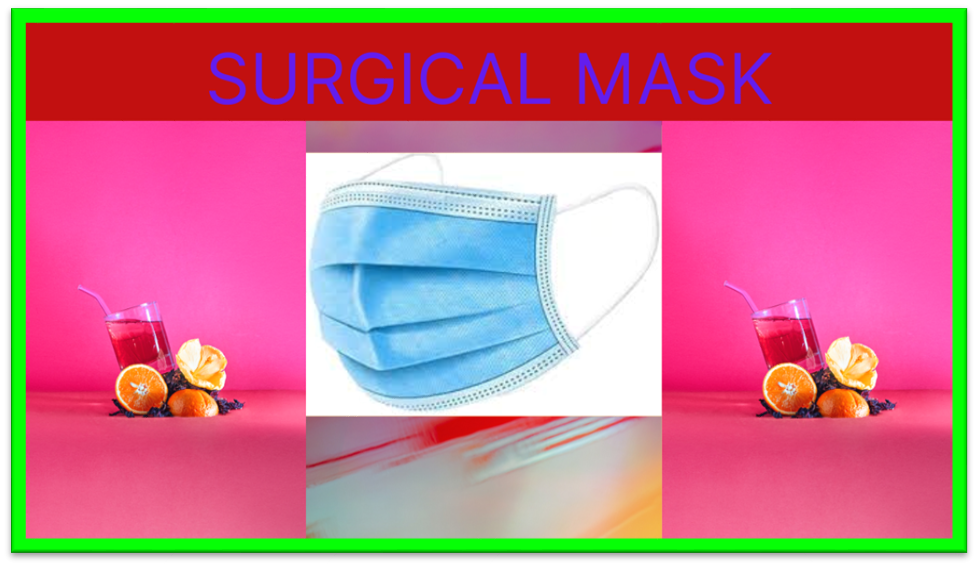Which mask offers the most level of protection against
COVID and H3N2—N95, KN95, surgical, or cloth?
To be safe and healthy,
learn how to choose a mask, which masks offer the best protection, when to
discard your mask, and other crucial information.
Ø It
has become crucial to take preventative steps in order to stay healthy amid a
dramatic rise in COVID-19 and flu (H3N2) cases.
Ø Wearing
masks in public places is crucial, especially now that everything has been
opened up, in addition to making sure to get the COVID-19 vaccination and the
preventive flu shots (after contacting a professional).
Ø But
which mask offers the most protection given the wide variety of masks on the
market, including surgical masks, fabric masks, N95, and KN 95? If you (along
with others) have the same concern, we've made it easier for you by asking
experts about topics like how to pick a mask for oneself, which one offers the
most protection, and when to throw the mask away, among other things.
To protect oneself against the COVID-19 and H3N2 viruses, should
you use a mask?
In order to stop the
spread of any viral flu-like diseases, such as COVID 19, H3N2, etc., it is
generally advised to wear a mask. "Airborne droplets and particles are the
primary means of transmission for COVID 19, H3N2, and all other respirable
viruses. Therefore, any mask is preferable to none at all, but it's essential
that the masks completely enclose your nose and mouth, have a nose wire to stop
air from escaping from the mouth.
Benefits and restrictions of each type of mask: cloth, surgical,
N95, KN 95, etc.
KN95 and N95 are
extremely comparable. The US standard is N95, while the Chinese standard is
KN95. The best protection is offered by surgical and fabric masks, followed by
N95 and KN95 masks. According to Dr. Yedlapati, N95 masks are the most
effective and can remove up to 95% of airborne particles, followed by KN95
(which offers protection that is very close to N95), surgical masks, and fabric
masks.
How to use a cloth face mask:
Ø The
lips and nose must be totally hidden by the face mask.
Ø Speaking,
coughing, or sneezing should not be done while wearing a face mask.
Ø Face
masks shouldn't be touched frequently, and fiddling with them is strongly
advised against.
Ø Hands
shouldn't touch the mask's interior side.
Ø After
removing the face mask, wash your hands.
Ø When
dried, iron cotton face masks that have been washed in warm, soapy water.
Ø In
order to have one face mask available while the other is being washed, each
person will need to have at least two face masks.
TYPES OF MASKS TO PROTECT AGAINST COVID-19:
1.
Disposable mask:
Ø Goal:
Limit the spread of the virus.
Ø Limited
filtration capacity.
Ø Manufacturing
is not regulated.
Ø It’s
thrown out after 1 use.
2.
Cloth
mask:
Ø Goal:
Limit the spread of the virus.
Ø Limited
filtration capacity.
Ø Manufacturing
is not regulated.
Ø It
can be reused unless broken or dirty.
Ø
Goal: Limit the spread of the virus.
Ø
Manufacturing based on ASTM standards.
Ø
Medium filtration capacity.
4. Respirator (Non-NIOSH
certified):
Ø
Goal:
Protect
the person wearing it.
Ø
High filtration capacity.
Ø
Manufacturing based on other jurisdictions
standards.
Ø
Example: KN95.
Ø
Extended use is possible.
5. Respirator (NIOSH
certified):
- Ø Goal: Protect the person wearing it.
- Ø High
filtration capacity.
- Ø Manufacturing
based on NIOSH standards.
- Ø Example:
Disposable N95.
- Ø Extended
use is possible.
"People who do not
operate in hazardous conditions can wear a cotton mask. A surgical mask would
be recommended for persons with employment that need high exposure, such as
those in malls, as bus drivers, in grocery stores, etc. Anyone caring for a patient
who is infected needs to wear a N95 mask. A surgical mask or N95 should also be
used for protection by those in the high-risk category.
Ø Ideally,
N95, K95, and surgical masks should only be used once. After washing, cloth
masks can be used again.
Ø However,
if you wear your N95/KN95 mask for a brief period of time, you can reuse it for
two to three days.
Ø The
suggested usage time for disposable masks is 6 to 12 hours. The masks'
filtration capacity is reduced if they get wet from sweat or other sources.
Ø Therefore,
these masks should ideally only be used once during a single shift;
nevertheless, due to financial concerns, the N95 can be reused three to four
times before being thrown.
Ø Ideally,
cloth masks should be changed every day. So, it is recommended to keep three to
five cotton masks on hand, and after using a mask, it should be cleaned with
soap and water or, if one is available, a disinfectant, and then air- or
sun-dried.
Things to remember:
Ø For
healthy people, wearing a multi-layered cotton mask that fits snugly and covers
the lips, chin, and nose is safe to do in public.
Ø High
risk persons should use a well-fitting N95 or surgical mask and discard it
after extended use. Do not wear unclean, dirty masks.
Ø Avoid
touching the paper bag's exterior when storing used masks. A mask not only
offers protection from blowing and inhaling droplets, but it also prevents
someone from touching their nose and mouth.





No comments:
Post a Comment